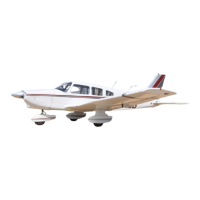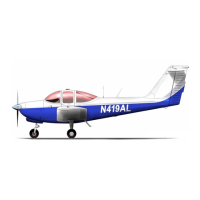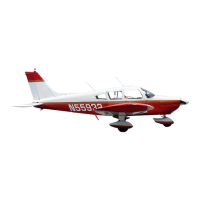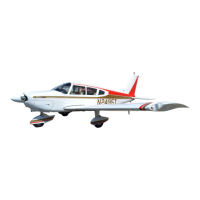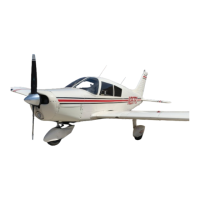THE NEW PIPER AIRCRAFT, INC.
PA-32-301FT / 301XTC
MAINTENANCE MANUAL
PAGE 4
Jun 1/03
5G4
81-20-00
3. Nomenclature
The following is a list of commonly used terms that apply to turbocharging.
Term Definition
Supercharge To increase the air pressure (density) above or higher than ambient conditions.
Supercharger A device that accomplishes the increase in pressure.
Turbo-supercharger More commonly referred to as a “Turbocharger” this device is driven by a turbine.
The turbine is spun by energy extracted from the engine exhaust gas.
Compressor The portion of a turbocharger that takes in ambient air and compresses it before
discharging it to the engine.
Turbine The exhaust driven end of the turbocharger unit.
Wastegate The wastegate is a butterfly type valve in the exhaust by-pass which, throughout
its travel from open to closed, allows varied amounts of exhaust pressure to by-
pass the turbine, controlling its speed, hence the output of the compression.
Ground Boosted or These phrases indicate that the engine depends on a certain amount of
Ground Turbocharged turbocharging at sea level to produce the advertised horsepower. An engine
that is so designed will usually include a lower compression ratio to avoid
detonation.
Deck Pressure The pressure measured in the area downstream of the turbo compressor
discharge and upstream of the engine throttle valve. This should not be confused
with manifold pressure.
Manifold Pressure The pressure measured downstream of the engine throttle valve and is almost
directly proportioned to the engine power output.
Normalizing If a turbocharger system is used only to regain power losses caused by
decreased air pressure of high altitude, it is considered that the engine has been
“normalized.”
Overboost An overboost condition means that manifold pressure is exceeding the limits at
which the engine was tested and FAA certified and can be detrimental to the life
and performance of the engine. Overboost can be caused by malfunctioning
controllers or improperly operating wastegate in the automatic system or by pilot
error in a manual controlled system.
NOTE: Refer to the latest revision of Lycoming Service Bulletin No. 369 for recommended engine
inspections after any Overspeed or Overboost conditions.
Overshoot Overshoot is a condition of the automatic controls not having the ability to
respond quickly enough to check the inertia of the turbocharger speed increase
with rapid engine throttle advance. Overshoot differs from overboost in that the
high manifold pressure lasts only for a few seconds. This condition can usually
be overcome by smooth throttle advance.
